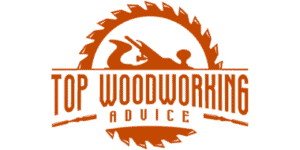Subscribe to WhosTheVoss on YouTube
Turning a single 2×12 board into hundreds of dollars may sound like a stretch—but for one experienced woodworker, it’s become a proven formula. With basic tools, a bit of creativity, and a patriotic twist, this handmade wooden flag has consistently sold out at local craft fairs. It’s a project that’s as profitable as it is meaningful—especially around Memorial Day, the Fourth of July, or Veterans Day.
With demand booming, and each flag selling for $150 or more, it’s no wonder this design has quickly turned into a crowd favorite.
🔑 Key Takeaways
- Low Cost, High Return: The entire project starts with a single $17 2×12 board and basic tools, turning into $150+ in profit per flag.
- Great for Craft Fairs: These wooden flags have sold out at multiple local markets, proving to be a fan favorite with patriotic buyers.
- Beginner-Friendly: Despite the professional look, the process is accessible—requiring only a circular saw, jigsaw, router, torch, paint, and some painter’s tape.
- Custom Finishing Options: Add depth with woodburning, paint details with stencils or stickers, and choose from clear coat or natural stains.
- Seasonal Sales Opportunity: Memorial Day, Independence Day, and Veterans Day offer prime opportunities to sell these handcrafted flags.
The Flag That Started It All
The original idea came out of necessity. With only 12-foot 2×12 boards available at the local lumberyard, the maker began by cutting the board into 4-foot sections right in the parking lot. From there, the flag layout was mapped using free plans (available at whostheoss.com), and transferred carefully onto the board using a speed square, tape measure, and straight edge.
After sketching out the flag’s signature contours—including the wave-like folds—a jigsaw and circular saw were used to remove material and shape the design. Insulation foam was used underneath to protect surfaces during cuts.
Carving & Shaping With Speed
To create the illusion of a waving flag, specific areas of the board were carved out using a sanding disc and grinder. The creator found that inexpensive sanding discs from Lowe’s or Harbor Freight outperformed even more aggressive tools, offering smooth contours while saving time.
Using a router with a round-over bit, edges were softened both front and back. A pointed router bit added groove lines to replicate flag folds, which were later darkened using a woodburning torch for contrast.
Dust collection was handled using a DIY method: a box fan with a furnace filter clipped to the back. Simple, but surprisingly effective.
Painting & Finishing Touches
Masking tape helped section off the flag’s folds and stripes, which were painted in alternating red and blue. The canton (upper left section) was painted blue, and stars were added using foam stickers from Hobby Lobby. This method left the star areas as natural wood—offering a subtle, rustic look.
The stars were reused between sections, and spacing was kept consistent with a “points-up” orientation for visual balance. The creator preferred a weathered aesthetic, using a touch of black in both the red and blue paints to tone down the brightness.
Once painted and dried, multiple finish options were tested:
- Woodburned + clear matte finish
- Woodburned + natural Minwax stain
- Natural finish with no burning
All three sold well, but the burned versions with deeper grooves tended to attract more attention and buyers.
Hanging Hardware & Presentation
Mounting the flag was made easy using a keyhole bit and a Forstner bit—allowing buyers to easily hang the piece without exposed hardware. The underside is drilled and routed so a screw head can slide in and lock securely.
It’s a clean, professional touch that adds value—and appeal—for customers who plan to display the flag in their homes or offices.
The Numbers That Matter
Let’s break it down:
- Materials: $17 for the board, a few dollars in paint, tape, and stickers
- Tools Used: Circular saw, jigsaw, sander/grinder, router, torch
- Build Time: Approx. 45–60 minutes per flag (faster with batching)
- Selling Price: $150 each (with some creators listing similar flags on Etsy for $200–$300)
- Profit Potential: $900 in sales from 6 flags—built from just two boards
And with patriotic holidays always around the corner, the demand isn’t likely to slow down.
Should You Make and Sell These Wooden Flags?
If you’re a hobbyist looking to make extra cash, or a craft fair vendor seeking reliable sellers, this project is a no-brainer. The build is straightforward, the materials are inexpensive, and the finished product has strong visual and emotional appeal.
Whether you woodburn, stain, or paint—these flags can be personalized to your style and your audience.
Ready to Build One?
Download the free printable plans from whostheoss.com, grab your tools, and get started. It only takes a single $17 board to turn your woodworking into real profit.
